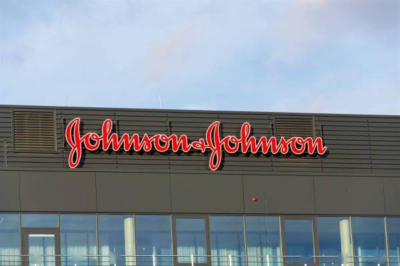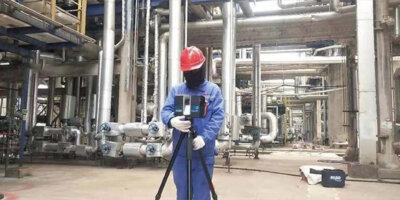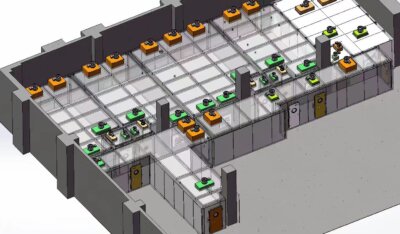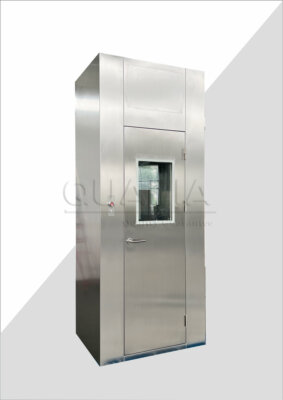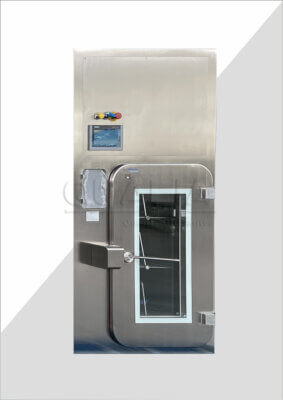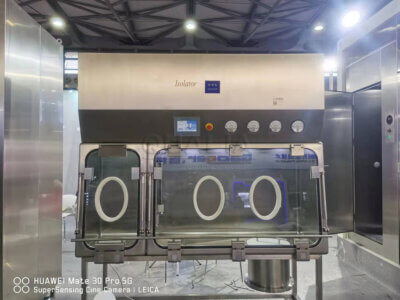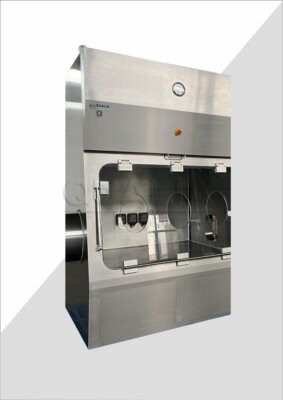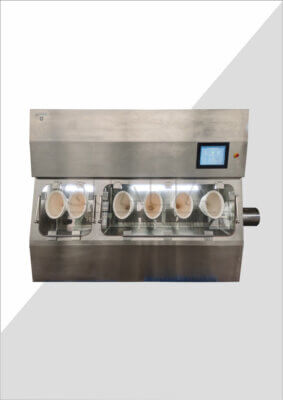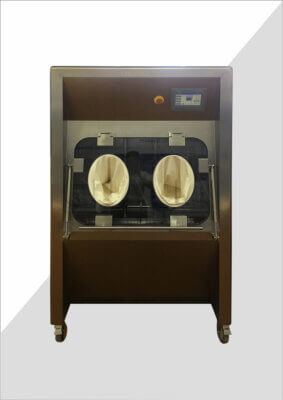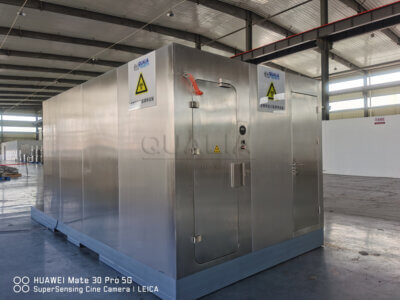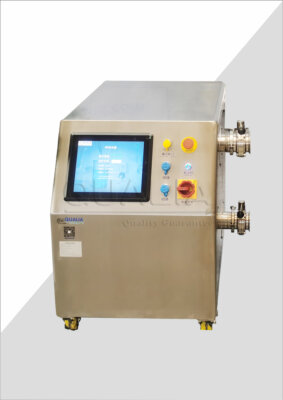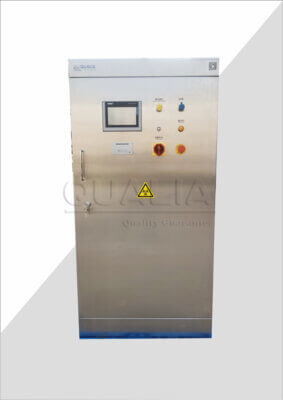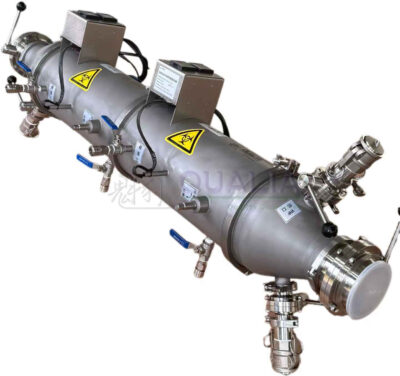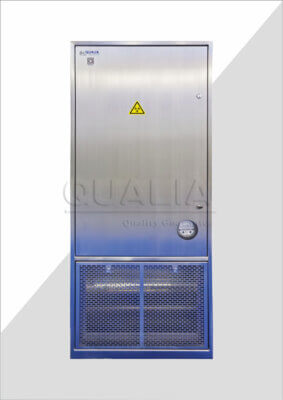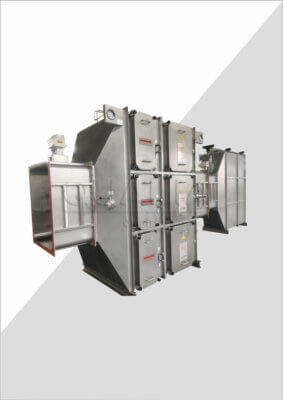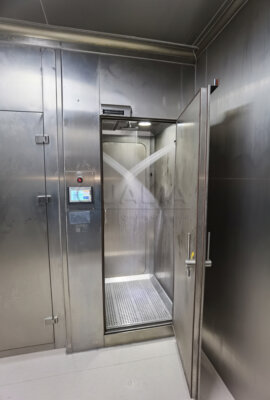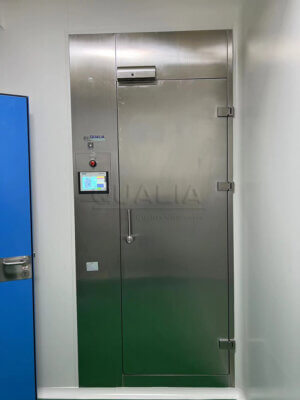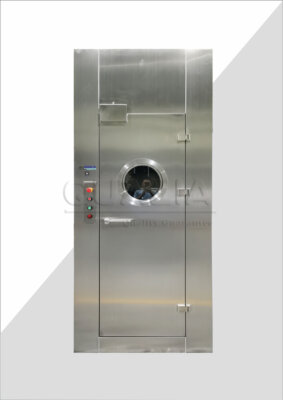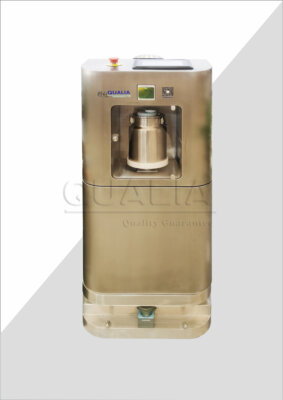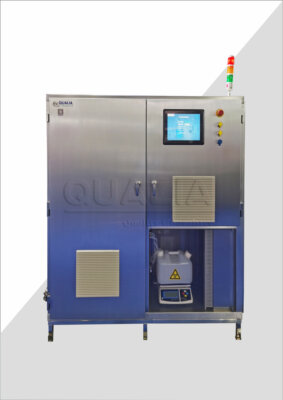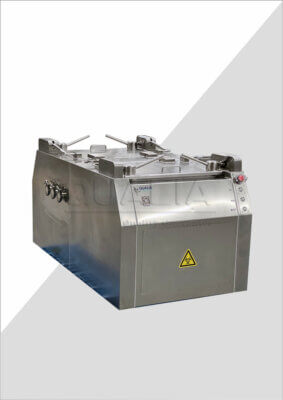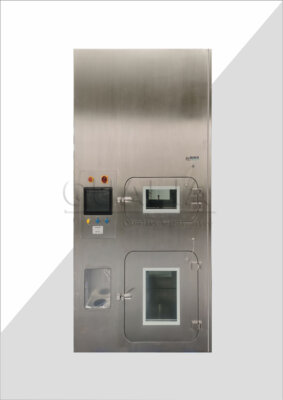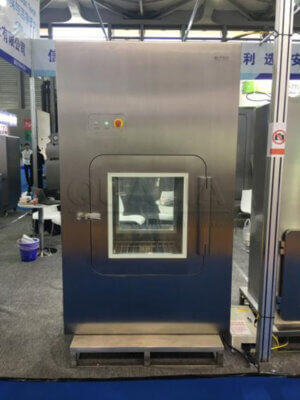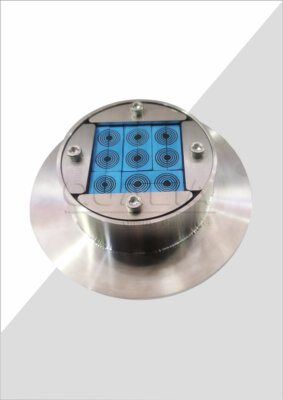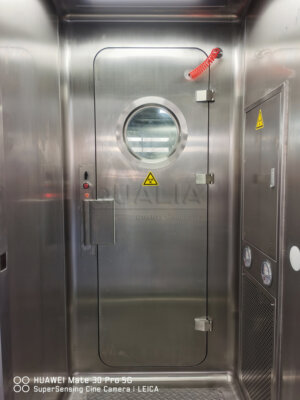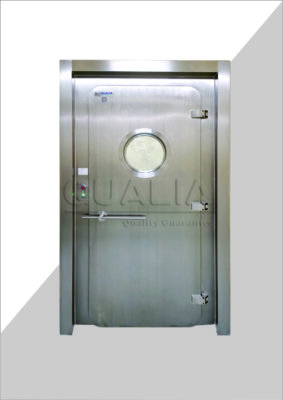Biosafety Level 4 (BSL-4) laboratories are at the forefront of researching the world's most dangerous pathogens. The health and safety of personnel working in these high-containment facilities are of paramount importance. Comprehensive health monitoring programs are crucial to protect workers from potential exposure to hazardous biological agents and to ensure the integrity of research conducted in these facilities.
In this article, we'll explore the intricate details of BSL-4 lab worker health monitoring programs, examining the various components that make up these critical safety measures. From pre-employment health screenings to ongoing medical surveillance, we'll delve into the multifaceted approach used to safeguard the well-being of those working on the frontlines of infectious disease research.
As we navigate through the complexities of BSL-4 health monitoring, we'll uncover the stringent protocols, cutting-edge technologies, and collaborative efforts that form the backbone of these programs. Understanding these measures is not only crucial for those directly involved in BSL-4 research but also for policymakers, health administrators, and the general public who benefit from the vital work conducted in these facilities.
BSL-4 health monitoring programs are essential for protecting laboratory personnel from potential exposure to highly dangerous pathogens and for maintaining the integrity of critical research conducted in these facilities.
What are the key components of a BSL-4 health monitoring program?
The foundation of any effective BSL-4 health monitoring program lies in its comprehensive approach to worker safety. These programs are designed to address the unique challenges posed by working with the most dangerous pathogens known to science.
At their core, BSL-4 health monitoring programs encompass a range of elements, including pre-employment health assessments, ongoing medical surveillance, and rigorous safety training. These components work in tandem to create a robust safety net for laboratory personnel.
One of the critical aspects of these programs is the continuous evaluation of workers' health status. This involves regular medical check-ups, immunization reviews, and prompt response to any potential exposure incidents. By maintaining a vigilant approach to health monitoring, facilities can quickly identify and address any health concerns that may arise.
Effective BSL-4 health monitoring programs integrate pre-employment screenings, ongoing medical surveillance, and comprehensive safety training to create a multi-layered approach to worker protection.
To illustrate the key components of a BSL-4 health monitoring program, consider the following table:
| Component | Description | Frequency |
|---|---|---|
| Pre-employment screening | Comprehensive medical evaluation | Once, before starting work |
| Immunization review | Assessment and update of required vaccinations | Annually |
| Medical surveillance | Regular health check-ups and testing | Quarterly |
| Safety training | Education on protocols and emergency procedures | Initially and annually |
| Exposure response | Immediate medical evaluation and treatment | As needed |
These components form the backbone of a robust health monitoring program, ensuring that BSL-4 laboratory workers are protected throughout their careers in high-containment research.
How are pre-employment health assessments conducted for BSL-4 lab workers?
Before stepping into the highly controlled environment of a BSL-4 laboratory, potential workers undergo rigorous pre-employment health assessments. These evaluations are designed to ensure that individuals are physically and mentally prepared for the demands of working in a high-containment facility.
Pre-employment health assessments for BSL-4 lab workers typically include a comprehensive medical history review, physical examination, and a battery of diagnostic tests. These assessments aim to identify any pre-existing health conditions that might increase the risk of complications in the event of exposure to dangerous pathogens.
An essential aspect of these assessments is the evaluation of the individual's immune status. This includes reviewing vaccination records and conducting serological tests to confirm immunity against various pathogens. In some cases, additional vaccinations may be required before an individual can begin work in a BSL-4 facility.
Pre-employment health assessments for BSL-4 lab workers are comprehensive, including medical history reviews, physical examinations, and immunological evaluations to ensure the candidate's suitability for high-containment work.
The following table outlines the typical components of a pre-employment health assessment for BSL-4 lab workers:
| Assessment Component | Purpose | Examples |
|---|---|---|
| Medical history review | Identify pre-existing conditions | Allergies, chronic diseases |
| Physical examination | Assess overall health status | Cardiovascular, respiratory checks |
| Immunological evaluation | Determine immune status | Antibody titers, vaccination records |
| Psychological assessment | Evaluate mental fitness | Stress tolerance, decision-making skills |
| Baseline health markers | Establish reference points | Blood work, lung function tests |
These thorough assessments ensure that only individuals with the appropriate health profile are cleared to work in the high-risk environment of a BSL-4 laboratory, contributing to the overall safety of the facility and its personnel.
What ongoing medical surveillance measures are implemented in BSL-4 facilities?
Once personnel begin working in a BSL-4 laboratory, ongoing medical surveillance becomes a critical component of the health monitoring program. These measures are designed to detect any potential health issues early and to monitor for any signs of exposure to the dangerous pathogens handled in the facility.
Ongoing medical surveillance in BSL-4 facilities typically includes regular health check-ups, periodic diagnostic testing, and continuous health monitoring. These measures allow for the early detection of any changes in a worker's health status that might indicate exposure or the development of work-related health issues.
One of the key aspects of ongoing medical surveillance is the use of advanced diagnostic tools and techniques. This may include regular blood tests, lung function assessments, and even genetic screening in some cases. The frequency and type of tests conducted can vary depending on the specific pathogens being handled in the facility and the nature of the work being performed.
Ongoing medical surveillance in BSL-4 facilities involves regular health assessments, advanced diagnostic testing, and continuous monitoring to promptly identify and address any potential health concerns among laboratory workers.
The following table illustrates some common ongoing medical surveillance measures implemented in BSL-4 facilities:
| Surveillance Measure | Frequency | Purpose |
|---|---|---|
| Health check-ups | Quarterly | General health assessment |
| Blood tests | Monthly | Monitor for infection markers |
| Lung function tests | Bi-annually | Assess respiratory health |
| Immunological screening | Annually | Evaluate immune status |
| Psychological evaluation | Annually | Assess mental well-being |
| Exposure incident review | As needed | Evaluate potential exposures |
These ongoing surveillance measures form a crucial part of the QUALIA BSL-4 lab worker health monitoring programs, ensuring the continued health and safety of personnel working in these high-risk environments.
How are potential exposure incidents handled in BSL-4 laboratories?
In the high-stakes environment of a BSL-4 laboratory, the potential for exposure to dangerous pathogens is a constant concern. Handling potential exposure incidents quickly and effectively is crucial for protecting the health of laboratory workers and preventing the spread of highly infectious agents.
When a potential exposure incident occurs in a BSL-4 facility, a well-defined protocol is immediately activated. This protocol typically involves isolating the affected individual, conducting a thorough decontamination process, and initiating immediate medical evaluation and treatment if necessary.
One of the key aspects of handling potential exposure incidents is the use of rapid diagnostic tools. These tools allow for quick identification of the pathogen involved and help guide treatment decisions. Additionally, comprehensive documentation and reporting procedures are implemented to track the incident, identify any breaches in protocol, and improve safety measures for the future.
BSL-4 laboratories have stringent protocols in place for handling potential exposure incidents, including immediate isolation, decontamination, rapid diagnostic testing, and comprehensive medical evaluation and treatment.
The following table outlines the typical steps involved in handling a potential exposure incident in a BSL-4 laboratory:
| Step | Action | Timeline |
|---|---|---|
| 1 | Incident identification and reporting | Immediate |
| 2 | Isolation of affected individual(s) | Within minutes |
| 3 | Decontamination procedures | Within 15-30 minutes |
| 4 | Rapid diagnostic testing | Within 1-2 hours |
| 5 | Medical evaluation and treatment | Within 2-4 hours |
| 6 | Incident documentation and review | Within 24 hours |
| 7 | Follow-up monitoring | Ongoing for weeks to months |
By following these structured procedures, BSL-4 facilities can effectively manage potential exposure incidents, minimizing risks to personnel and maintaining the integrity of their research operations.
What role does psychological support play in BSL-4 health monitoring programs?
Working in a BSL-4 laboratory can be mentally and emotionally demanding. The constant awareness of potential risks, the isolation imposed by containment procedures, and the high-stakes nature of the research can all contribute to significant psychological stress. Recognizing this, comprehensive BSL-4 health monitoring programs incorporate robust psychological support systems.
Psychological support in BSL-4 facilities typically includes regular mental health check-ins, access to counseling services, and stress management training. These measures aim to maintain the mental well-being of workers, ensuring they remain focused, alert, and capable of adhering to critical safety protocols.
An essential aspect of psychological support is the creation of a supportive work environment that encourages open communication about mental health concerns. This includes fostering a culture where workers feel comfortable reporting stress or anxiety without fear of stigma or professional repercussions.
Psychological support is a critical component of BSL-4 health monitoring programs, addressing the unique mental and emotional challenges faced by workers in high-containment laboratories through regular assessments, counseling services, and a supportive work culture.
The following table outlines key elements of psychological support in BSL-4 health monitoring programs:
| Support Element | Description | Frequency |
|---|---|---|
| Mental health assessments | Evaluation of psychological well-being | Quarterly |
| Counseling services | Access to mental health professionals | As needed |
| Stress management training | Education on coping strategies | Annually |
| Peer support groups | Facilitated discussions among colleagues | Monthly |
| Work-life balance initiatives | Programs to promote overall well-being | Ongoing |
By prioritizing psychological support, BSL-4 facilities can help ensure that their workers remain mentally resilient and capable of maintaining the high levels of focus and precision required in these critical research environments.
How do BSL-4 facilities manage long-term health monitoring for former employees?
The potential health risks associated with working in a BSL-4 laboratory don't necessarily end when an employee leaves the facility. Recognizing this, many BSL-4 health monitoring programs extend their reach to include long-term health surveillance for former employees.
Long-term health monitoring for former BSL-4 workers typically involves periodic health check-ups, continued access to specialized medical care, and ongoing communication about potential delayed health effects related to their previous work. This extended monitoring can be crucial for detecting any long-term health impacts that may not manifest immediately.
One of the challenges in managing long-term health monitoring is maintaining contact with former employees and ensuring their continued participation in the program. To address this, many facilities implement robust follow-up systems and provide incentives for ongoing participation in health assessments.
BSL-4 facilities often implement long-term health monitoring programs for former employees, recognizing that potential health effects from working with dangerous pathogens may manifest years after exposure, ensuring continued medical surveillance and support.
The following table illustrates key components of long-term health monitoring for former BSL-4 employees:
| Monitoring Component | Description | Duration |
|---|---|---|
| Periodic health assessments | Comprehensive medical check-ups | Every 1-2 years |
| Specialized medical access | Consultation with experts in infectious diseases | As needed |
| Health effect notifications | Updates on potential delayed health impacts | Ongoing |
| Biomarker monitoring | Regular testing for specific health indicators | Annually |
| Immunological assessments | Evaluation of long-term immune function | Every 2-3 years |
By maintaining these long-term monitoring programs, BSL-4 facilities demonstrate their commitment to the health and safety of their workers, even beyond their active employment period.
What technological advancements are enhancing BSL-4 health monitoring programs?
In recent years, technological advancements have significantly improved the capabilities and effectiveness of BSL-4 health monitoring programs. These innovations are enhancing both the accuracy of health assessments and the overall safety of laboratory operations.
One of the most significant technological advancements in this field is the development of real-time health monitoring systems. These systems use wearable devices and sensors to continuously track vital signs and other health indicators of laboratory workers, allowing for immediate detection of potential health issues or exposure incidents.
Another area of technological progress is in rapid diagnostic tools. Advanced PCR techniques and next-generation sequencing technologies are enabling faster and more accurate identification of pathogens, crucial for both research purposes and managing potential exposure incidents.
Technological advancements such as real-time health monitoring systems, rapid diagnostic tools, and AI-assisted data analysis are revolutionizing BSL-4 health monitoring programs, enhancing worker safety and improving the efficiency of laboratory operations.
The following table highlights some key technological advancements enhancing BSL-4 health monitoring programs:
| Technology | Application | Benefit |
|---|---|---|
| Wearable biosensors | Continuous health monitoring | Real-time detection of health changes |
| AI-assisted data analysis | Health trend prediction | Early identification of potential issues |
| Advanced PCR techniques | Rapid pathogen identification | Faster response to exposure incidents |
| Virtual reality training | Safety protocol simulation | Enhanced preparedness for emergencies |
| Blockchain record-keeping | Secure health data management | Improved data integrity and privacy |
These technological advancements are integral to the BSL-4 lab worker health monitoring programs offered by leading biosafety companies, ensuring that health monitoring in these critical facilities remains at the cutting edge of scientific capability.
How do international collaborations influence BSL-4 health monitoring standards?
BSL-4 laboratories operate within a global context, and international collaborations play a crucial role in shaping and standardizing health monitoring practices across different facilities worldwide. These collaborations foster the sharing of best practices, the development of unified safety protocols, and the establishment of global standards for worker health and safety.
International organizations such as the World Health Organization (WHO) and the International Federation of Biosafety Associations (IFBA) play a pivotal role in facilitating these collaborations. They organize conferences, workshops, and training programs that bring together experts from different countries to discuss and refine health monitoring strategies for high-containment laboratories.
One of the key benefits of these international collaborations is the harmonization of health monitoring standards across different countries. This not only enhances the overall safety of BSL-4 research globally but also facilitates international research collaborations by ensuring that all participating facilities adhere to comparable safety standards.
International collaborations in BSL-4 health monitoring lead to the development of global best practices, standardized safety protocols, and unified worker health standards, enhancing the overall safety and effectiveness of high-containment research worldwide.
The following table illustrates some ways in which international collaborations influence BSL-4 health monitoring standards:
| Collaboration Type | Impact | Example |
|---|---|---|
| International conferences | Knowledge sharing | Annual Biosafety and Biosecurity Conference |
| Joint research projects | Unified protocols | Global Virome Project |
| Training exchanges | Skill standardization | WHO Biosafety Training Program |
| Policy working groups | Regulatory harmonization | IFBA Biosafety Policy Task Force |
| Global health initiatives | Coordinated response | Global Health Security Agenda |
These international collaborations ensure that BSL-4 health monitoring programs continue to evolve and improve, incorporating the best practices and latest scientific knowledge from around the world.
In conclusion, BSL-4 health monitoring programs are critical components in ensuring the safety of laboratory personnel working with the world's most dangerous pathogens. These comprehensive programs encompass a wide range of measures, from pre-employment screenings to long-term health surveillance for former employees. The integration of cutting-edge technologies and the influence of international collaborations continue to enhance these programs, pushing the boundaries of what's possible in biosafety and worker protection.
As we've explored throughout this article, the multifaceted approach to health monitoring in BSL-4 facilities reflects the high stakes involved in this critical research. From rigorous pre-employment assessments to ongoing medical surveillance, from rapid response protocols for potential exposures to long-term health tracking, every aspect of these programs is designed with the utmost care and attention to detail.
The future of BSL-4 health monitoring looks promising, with technological advancements and global collaborations paving the way for even more effective and standardized safety measures. As the field of high-containment research continues to evolve, so too will the strategies and tools used to protect the brave individuals working on the frontlines of infectious disease research.
Ultimately, the success of BSL-4 health monitoring programs not only ensures the safety of laboratory workers but also contributes to the broader goal of advancing our understanding of dangerous pathogens and developing treatments and preventive measures that benefit global public health. As we continue to face new and emerging infectious disease threats, the importance of these programs and the dedicated professionals who implement them cannot be overstated.
External Resources
Frontiers in Public Health – Potential Impact of a 2-Person Security Rule on BioSafety Level 4 Laboratory Workers – This article discusses the safety and security measures in BSL-4 laboratories, including health monitoring and surveillance systems to ensure the safety of workers.
Wikipedia – Biosafety level 4 – This Wikipedia article details the stringent safety protocols and health monitoring requirements for workers in BSL-4 laboratories, including the use of positive-pressure suits and decontamination procedures.
CDC – Biosafety Levels – The Centers for Disease Control and Prevention (CDC) provides guidelines and protocols for biosafety levels, including health monitoring programs for BSL-4 lab workers.
WHO – Laboratory Biosafety Manual – The World Health Organization's manual on laboratory biosafety includes sections on health monitoring and safety protocols for workers in high-containment laboratories like BSL-4.
NIH – Biosafety and Biosecurity – The National Institutes of Health (NIH) offers resources on biosafety and biosecurity, including health monitoring programs and safety guidelines for BSL-4 laboratory workers.
OSHA – Biosafety Laboratories – The Occupational Safety and Health Administration (OSHA) provides guidelines and standards for ensuring the health and safety of workers in biosafety laboratories, including BSL-4 facilities.
American Biological Safety Association (ABSA) – ABSA provides resources, guidelines, and best practices for biological safety, including health monitoring programs specifically tailored for BSL-4 laboratory workers.
Public Health Agency of Canada – Biosafety and Biosecurity – This resource offers detailed information on biosafety and biosecurity measures, including health monitoring programs for workers in high-containment laboratories such as BSL-4.
Related Contents:
- BSL-3 Health Monitoring: Personnel Program Guide
- Global Disease Surveillance: BSL-4 Lab Networks
- Biodefense Research in BSL-4 Labs: Protecting Public
- BSL-3 vs BSL-4: Key Differences in Lab Safety Levels
- BSL-3/4 Biosafety Training: Comprehensive Guide
- BSL-4 Standards: Global Regulations for Biosafety
- BSL-3 Biosurveillance: Advanced Lab Programs
- Portable BSL-3 Labs: Flexible Containment Options
- BSL-4 Biodefense: Cutting-Edge Research Programs

